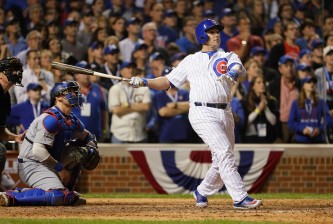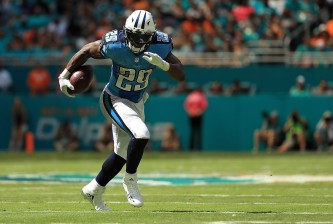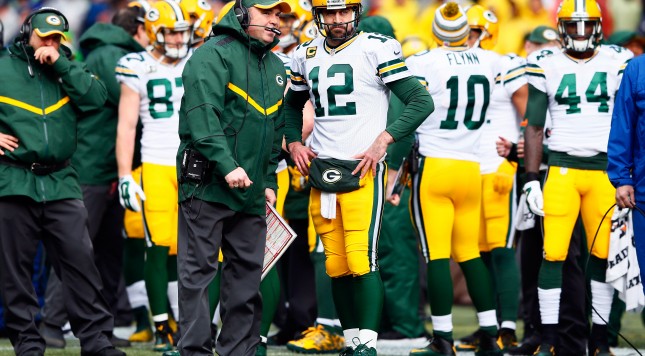Just like that, the Packers 2014 season came to an end. An NFC Championship filled with excitement, drama and opportunities all collapsed in the game’s final minutes. With five minutes left, the Packers’ path to Super Bowl XLIX seemed sealed with a 19-6 lead.
Instead, all of the Packers’ key issues were revealed in one brief sequence of events, helping ignite a Seattle comeback. It was essentially over as soon as the Seahawks won the overtime coin toss. Five plays later, Russell Wilson found Jermaine Kearse for the game-winning 35-yard touchdown pass.
This game was a microcosm of the 2014 Green Bay Packers, the perfect blend of everything good and bad that defined this season. Just a few plays, a handful of bad decisions and weaknesses on the roster came back to bite them in the end.
Now that the season is over, let’s take a look at seven things we learned from Green Bay’s 2014 season.
The offensive line might be set
For much of Aaron Rodgers’ tenure as the Packers quarterback, the offensive line has been problematic. Bryan Bulaga missed most of the 2012 and 2013 seasons, right guard T.J. Lang was still developing and the only reliable protector was left guard Josh Sitton.
That has changed this year. Bulaga stayed relatively healthy in a contract year, Lang played like a Pro Bowl-caliber guard and rookie Corey Linsley emerged as a talented center. When tested against some of the best defensive fronts in the game, they stood up to the test against the Buffalo Bills, Detroit Lions and Seattle Seahawks. Both Sitton and Lang played through pain this season. Lang fought through an ankle injury for most of the year and Sitton has played with a torn ligament in his toe.
The offseason should allow their bodies time to heal up, but it will be even more important for Linsley and LT David Bakhtiari to improve and get stronger. The lone question remaining is if GM Ted Thompson is able to bring back Bulaga. He certainly played at a high level, but has a history of knee injuries and there is only $25 million in cap room right now for all of Green Bay’s free agents. If everyone is back and stays healthy, this will be a great offensive line for years to come.
Special teams needs a shake-up
In order to make it to the Super Bowl, a team must be successful in all three phases of the game. While Green Bay’s offense was strong for most of the year and the defense improved, special teams was an utter mess under ST coordinator Shawn Slocum.
Problems on special teams can be attributed to a multitude of issues–a lack of depth, bad execution, poor coaching and bad communication. A lack of depth can certainly be credited to the general manager, but it’s up to a coach to work with the players he is given and help them grow into their roles.
Seven blocked kicks in the regular season (three field goals, three extra points and two punts) certainly reflect poorly on the protection. K Mason Crosby has had his struggles in the past, but the blocked kicks were a result of very poor blocking in front of him. Injuries to Lang and Sitton didn’t help, as it took them off special teams, but no one seemed prepared to step up when they went down.
The kickoff return unit was a liability as well. DuJuan Harris finished 20th among 21 qualified return men with 20.7 yards per return. Among Harris’ faults was his decision-making, returning kicks from deep in the end zone when he lacks the quickness to create a significant return. He wasn’t replaced until mid-December, when he was finally put on the inactive list.
Lastly, Tim Masthay ran into a lot of problems in the second-half of the season. Over the final eight games, Masthay averaged 39.7 yards per punt with four inside the 20 on 24 attempts. His struggles could be attributed to a lack of opportunities, but his problems were still very costly.
Slocum might end up being the sacrificial lamb, and that’s a good thing. There will be pressure on Thompson to bring in some different personnel to help execution, but the special teams unit as a whole must be fixed going forward.
Aaron Rodgers can play through pain
While Rodgers has certainly won over many fans during the course of his seven-year run as QB, there is still a contingent of Packers fans that doubt his ability to win in the playoffs since the team’s Super Bowl run. Of the many accomplishments Rodgers has achieved, playing through pain isn’t the most notable.
While we all know the end result, Rodgers played well in hostile territory against the best defense in football. A quarterback who can fight through excruciating pain and compete for his teammates is an incredible motivating factor. While they didn’t make it to the Super Bowl, it further cements Rodgers’ status as one of the greatest this game has ever seen. And it should help quiet down the Brett-Favre-was-better crowd.
Young stars are emerging
Corey Linsley has already been mentioned as a pleasant surprise from Green Bay’s rookie class. There have been even more notable positives this season from the rookie class. It starts from the top picks like FS Ha’Sean Clinton-Dix, WR Davante Adams and TE Richard Rodgers.
Clinton-Dix made adjustments and slowly progressed early in the year, then started to put together a string of strong games. He put together a huge two-interception performance versus the Seahawks, but a blown coverage on a two-point conversion shows he still has room to grow.
Adams had a quiet year when compared to the rest of the rookie wide receiver class, but he came up big twice in clutch moments. 100-yard performances against the New England Patriots and Dallas Cowboys showed everyone that he is ready to move into a prominent role as he develops more chemistry with Rodgers. Richard Rodgers also came through down the stretch as a real threat at tight end, opening the door for the starting job and an increased role in the passing game next season.
Ted Thompson filled needs at safety and tight end in the 2014 draft and he found impressive talent. But the mark of a great evaluator is addressing future needs and adding weapons around a superstar, which is exactly what Green Bay found in Adams.
Big decisions lie ahead
For those expecting Green Bay to pursue an elite pass-rusher like Ndamukong Suh or Justin Houston, you don’t know this front office well enough. But while they won’t be major spenders on the open market this season, the offseason will be key for Green Bay.
It will start with the cap decisions and how Thompson opts to create more room. $25 million doesn’t account for at least $5 million that will go to the 2015 rookie class, leaving Green Bay with just around $20 million with plenty of free agents. But the Packers can free up $7.25 million by cutting ties with linebackers Brad Jones and A.J. Hawk, both of whom have played poorly for two seasons now.
The extra money alone could go to Bulaga, a $7 million/year salary would tie him for the highest-paid right tackle in the league. This type of move would allow the Packers enough cap space to re-sign WR Randall Cobb and CB Davon House. It would keep the Packers’ core foundation together, with a focus on keeping the young players.
Of course, Green Bay must also be wary of how much cap space that would leave for future seasons. Rodgers’ cap number will increase over the years and defensive lineman Mike Daniels will be the most valuable free agent over the next two seasons. Tough decisions lie ahead for this front office, including potentially having to let Bulaga or Cobb depart for a bigger payday.
While the Packers might avoid diving into the free agency frenzy, there will be plenty to watch as they attempt to retain their own players.
The defense is improving, but it’s still not there yet
After years of chants for the ousting of DC Dom Capers and a string of poor selections on the defensive side of the ball, it appears real progress has been made. While this group certainly isn’t one of the league’s top 10 defenses, they have vastly improved from the record-setting low they achieved just a few seasons ago.
The rise of the defense is in large part to the credit of players like Mike Daniels, Clay Matthews, Micah Hyde, Casey Hayward and now Julius Peppers. The defensive line is starting to develop. Matthews and Peppers were an excellent pass rush duo this season and the young secondary is improving.
There is plenty of young talent to like as well. Davon House must be brought back due to his size at cornerback, and he would pair with Hayward, Clinton-Dix and Sam Shields for a secondary that played well in the playoffs. But the area that must still be addressed is at inside linebacker. Green Bay doesn’t have a thumper who can take on powerful running backs, nor do they have an athletic ILB who can cover sideline to sideline.
Green Bay must also find a true nose tackle to plug the running lanes. While Letroy Guion was adequate in a fill-in role this season, he is best served as a situational player.
The Packers need a true force in the middle that can draw double teams and make life easier for the linebackers behind him. The Packers front office has done a nice job filling needs the past two drafts, now they must step up to the challenge again to complete the defensive turnaround.
Coaching must improve
After writing about the Packers players for most of the season, the focus now shifts to the coaching staff. The jobs of HC Mike McCarthy and DC Dom Capers are certainly more than safe. But both coaches will receive more than a share of criticism for what went on.
A ridiculous, unimaginable game, but one that somehow still revealed true nature of both head coaches thru its mind-boggling circumstances
— Sigmund Bloom (@SigmundBloom) January 18, 2015
McCarthy’s questionable play calling isn’t a recently discovered phenomenon. From abandoning the running game too early in big matchups, to his decision-making on challenges and timeouts, McCarthy has his “huh?” moments.
What we saw was a team that lacked the “killer” mentality to put games away, always playing things safe and making poor decisions at the wrong time. It’s reflected in multiple ways. McCarthy has won just three of 11 challenges over the past two seasons. The offense has also turned away from Eddie Lacy near the goal line, electing to call gadget plays instead. His conservative in-game tendencies reflected on the players as well, including Morgan Burnett sliding to the turf instead of trying to advance the ball.
While Capers called a quality game, no moment stands out more than his decision to play prevent defense after Clay Matthews’ sack to set up Seattle with a 2nd-and-30 at their own 41. Rather than send pressure, Capers elected to go with a three-man rush and dropped eight deep. It came back to bite him. Seattle picked up 30 yards on the next two plays. Capers has long been known for his affinity to blitz, but he turned away from it in a critical juncture of the game. And the team paid for it.
Changes to the coaching staff don’t necessarily need to be made, but it’s clear even some Green Bay players think the lack of aggressiveness has been a serious issue.























